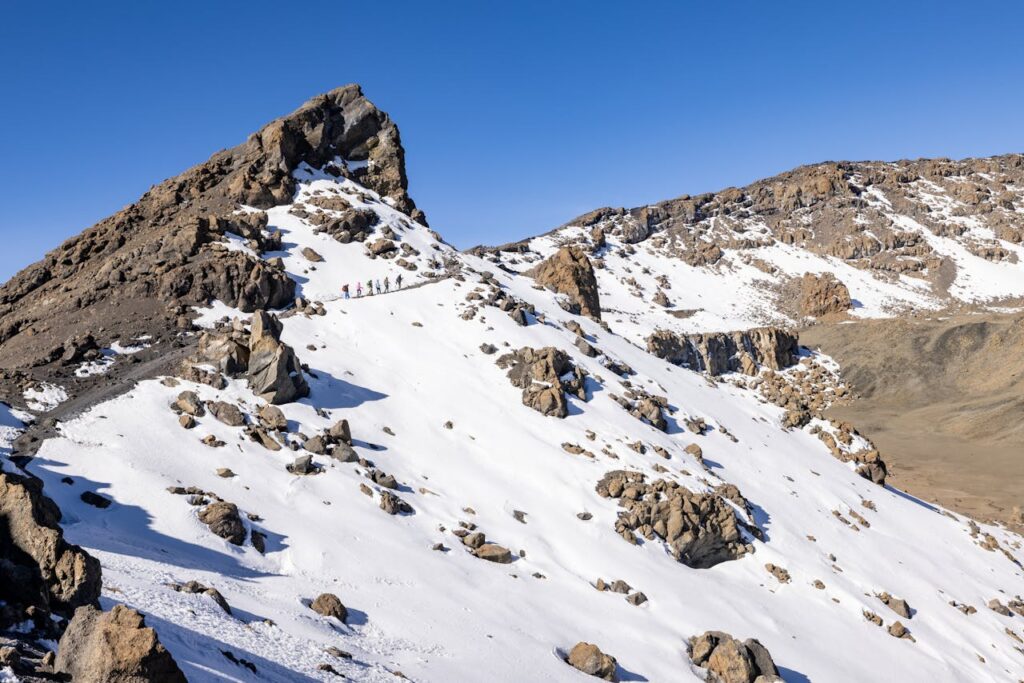How to Train for Mount Kilimanjaro: A First-Timer’s Guide to Breathtaking Summit Experiences

Climbing Mount Kilimanjaro is a dream for many adventurers. Standing at 19,341 feet, it is not only the highest peak in Africa but also one of the most accessible mountains for trekkers. However, the journey to the summit is no walk in the park. Proper training and preparation are essential to ensure a safe and enjoyable experience. This guide will walk you through the necessary steps to prepare for this breathtaking trek, especially if you’re a first-timer.
Understanding the Challenge
Before diving into training specifics, it’s crucial to understand what you’re up against. Kilimanjaro is often referred to as Africa’s highest trekking challenge, and for good reason. The trek typically takes between five to nine days, depending on the route you choose. The altitude, weather conditions, and physical demands can be daunting, but with the right preparation, you can conquer this iconic peak.

Setting Your Training Timeline
Training for Kilimanjaro should ideally begin at least three to six months before your departure. This timeline allows you to build endurance, strength, and acclimatization to higher altitudes. Here’s a breakdown of how to structure your training:
Months 1-2: Building a Base
• Cardiovascular Fitness: Start with aerobic exercises like walking, jogging, cycling, or swimming. Aim for at least 30 minutes of moderate-intensity cardio, five days a week. Gradually increase the duration and intensity as your fitness improves.
• Strength Training: Incorporate strength training exercises focusing on your legs, core, and upper body. Squats, lunges, deadlifts, and planks are excellent choices. Aim for two to three sessions per week.
Months 3-4: Increasing Intensity
• Hiking: Begin hiking on local trails, ideally with elevation gain. Start with shorter hikes and gradually increase the distance and difficulty. Aim for at least one long hike (4-6 hours) each week.
• Altitude Training: If possible, spend time at higher elevations to help your body acclimatize. This could be as simple as hiking in the mountains or using altitude training masks.
Months 5-6: Simulating the Trek
• Back-to-Back Hikes: In the final month, plan back-to-back hiking days to simulate the trek. For example, hike for six hours on Saturday and then do another long hike on Sunday. This will help your body adapt to consecutive days of exertion.
• Pack Weight: As you get closer to your departure date, start hiking with a loaded backpack. Gradually increase the weight to match what you’ll carry on Kilimanjaro, typically around 20-30 pounds.
Essential Gear for the Trek
Having the right gear is just as important as physical preparation. Here’s a list of essentials you’ll need for your Kilimanjaro adventure:
• Footwear: Invest in a good pair of hiking boots that provide ankle support and are broken in before your trek. Consider bringing a pair of camp shoes for downtime.
• Clothing: Layering is key. Bring moisture-wicking base layers, insulating mid-layers, and waterproof outer layers. Don’t forget a warm hat, gloves, and a buff or scarf.
• Backpack: A comfortable, well-fitted backpack is essential. Look for one with a hydration reservoir and enough space for your gear.
• Trekking Poles: These can help reduce strain on your knees during descents and provide stability on uneven terrain.
Nutrition and Hydration
Proper nutrition and hydration are critical during your training and the trek itself. Here are some tips to keep in mind:
• Balanced Diet: Focus on a diet rich in carbohydrates, proteins, and healthy fats. Carbs will provide the energy you need for long hikes, while proteins will aid in muscle recovery.
• Hydration: Drink plenty of water during your training and on the mountain. Aim for at least three liters per day while trekking. Consider using electrolyte tablets to replenish lost minerals.
Mental Preparation
Climbing Kilimanjaro is as much a mental challenge as it is a physical one. Here are some strategies to prepare mentally:
• Visualization: Spend time visualizing your trek. Picture yourself reaching the summit and the feelings of accomplishment that will come with it.
• Mindfulness and Breathing: Practice mindfulness techniques and deep breathing exercises to help manage anxiety and maintain focus during the trek.
Final Thoughts
Training for Mount Kilimanjaro is a rewarding journey that prepares you not just for the physical demands of the trek, but also for the mental challenges that come with it. By following a structured training plan, investing in the right gear, and focusing on nutrition and hydration, you’ll set yourself up for success.
As you embark on this adventure, remember that reaching the summit is just one part of the experience. The breathtaking landscapes, diverse ecosystems, and camaraderie with fellow trekkers will create memories that last a lifetime. So lace up your boots, hit the trails, and get ready for the adventure of a lifetime!


